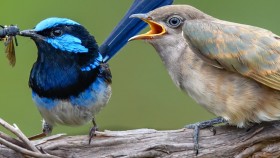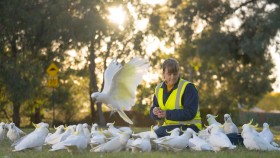Climate change and breeding migration in the Christmas Island red crab
Current climate models project changes in both temperature and precipitation patterns across the globe in the coming years. Migratory species, which move to take advantage of seasonal climate patterns, are likely to be affected by these changes. The timing of the annual Christmas Island red crab breeding migration is closely related to the amount of rain that falls during a ‘migration window’ period prior to potential egg release dates, which is in turn related to the Southern Oscillation Index, an atmospheric El Niño- Southern Oscillation Index. As reproduction in this species is conditional on successful migration, major changes in migration patterns could have detrimental consequences for the survival of the species.
The study was undertaken by Allison Shaw while undertaking a PhD at Princeton, now a Visiting Fellow in the Kokko Lab; and co-author Kathryn Kelly from the University of Washington.
The work was supported by grants from the National Geographic/Waitt Institute for Discovery, NSF (No. DGE-0646086), and NASA (NNX08AR30G).
Related links
- Shaw, AK & Kelly, KA, Linking El Niño, local rainfall, and migration timing in a tropical migratory species,Global Change Biology
- How Red Crabs on Christmas Island speak for the tropics, News at Princeton
- Christmas Island Red Crabs, National Geographic
- Weather threatening Christmas Island red crabs, news.com.au
- Will climate changes keep red crabs of Christmas Island from spawning? EarthSky
- Changing rainfall patterns spell catastrophe for Christmas crabs RTCC
- Lack of rain can mean no new crabs Futurity.








